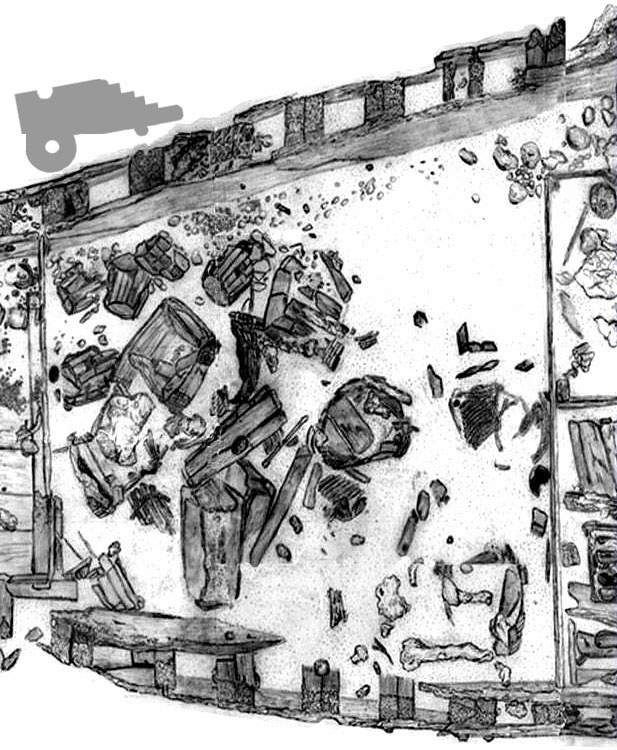
Ceramic firepots, which were used somewhat like Molotov cocktails. The pottery containers originally held gunpowder, an iron ball, and a wick. When lit and hurled at an enemy, the pot would break on impact, causing the combustible materials to ignite and the iron ball to explode.  |

Wheel on wooden gun carriage, found outside the port side of the ship.  |

Wooden barrel with hoops and withy binding still intact. Of varying sizes, the barrels were used to store gunpowder, liquids, dry goods (such as foodstuffs and cloth), and trade goods. To the right is the portable grid used by the archeologists to help measure and document features and artifacts within each excavation unit. The white fabric shown at top was used to wrap large items, such as barrels and boxes, prior to jacketing them in plaster, a process which kept the objects intact as they were removed from the shipwreck  |
|
The materials in the aft hold of the ship had been badly scrambled, apparently because the crew had moved the cargo about in order to make more living and cooking space. When the ship was wrecked during the calamitous storm, cargo shifted overhead and fell into the aft space, breaking apart into jumbled piles.
In this rear compartment, the archeologists made a remarkable discovery. Amid coils of rope and brass wire, ammunition, and other items, they found two wooden boxes filled with the items La Salle had hoped to use for bartering with native peoples in the New World. According to Principal Investigator James Bruseth, these small “trader”chests, brimming with diminutive metal and glass objects, are unique in North American archeology. Packed inside the first box were hundreds of brass Jesuit rings tied together with string along with stacks of wooden combs, cans of small round mirrors, and dozens of knives. The second box contained some 600,000 glass beads—white, black, and cobalt blue—still strung on their original thread and wrapped around a piece of rope to bind them in place. This treasure would have been paid for personally by La Salle and his men, as the French king did not provide the funds for trade goods. In addition to the two boxes, 22 barrels also were uncovered in the aft hold, along with rope and coils of brass wire, the “duct tape” of the time.
After excavating and removing the jumbled cargo, archeologists found another layer of remains at the bottom of the aft hold: bricks from the cooking galley, empty wine bottles, animal bones, eating utensils, and game pieces. Crewmembers had gathered in this small, makeshift cooking galley to have meals, play games, and escape the cold, likely while the ship was anchored in Matagorda Bay.
| 
Cutaway view of La Belle showing main hold section. Inset from painting by Charles Shaw. See full image.

Cargo in this compartment lay jumbled apart and broken. |
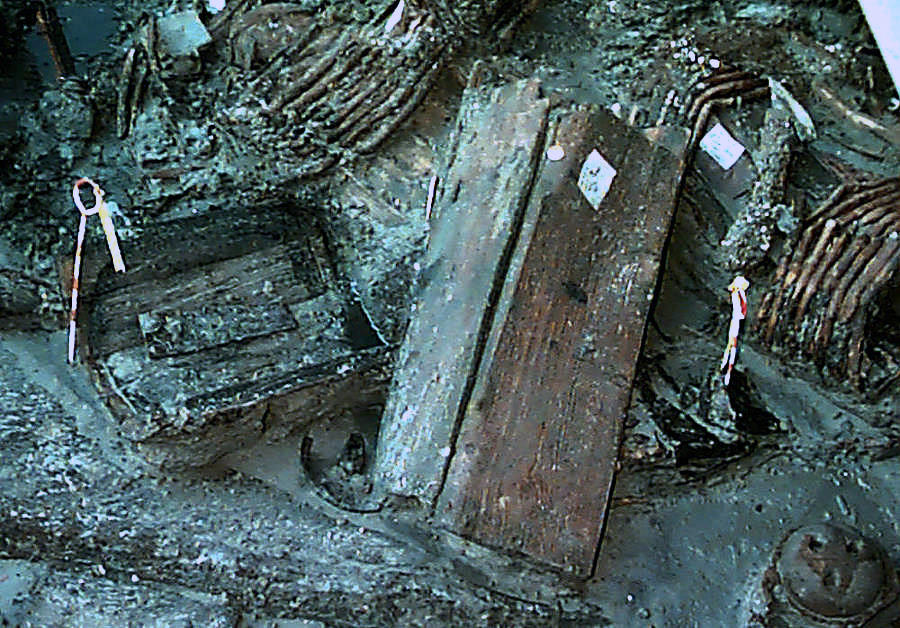
An intact wooden traders’ box, unique in North American archeology. |
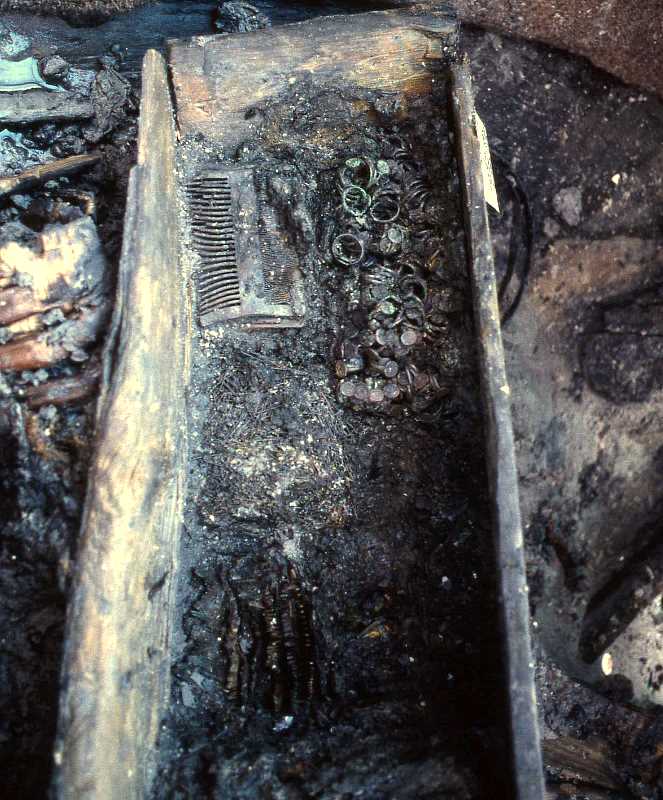
Looking inside one of the two trader’s boxes found in the aft hold. The wooden chest was still packed with hundreds of Jesuit rings, brass pins, combs, and mirrors. The items would have been used for bartering and boosting relations with Native peoples in the new land. |
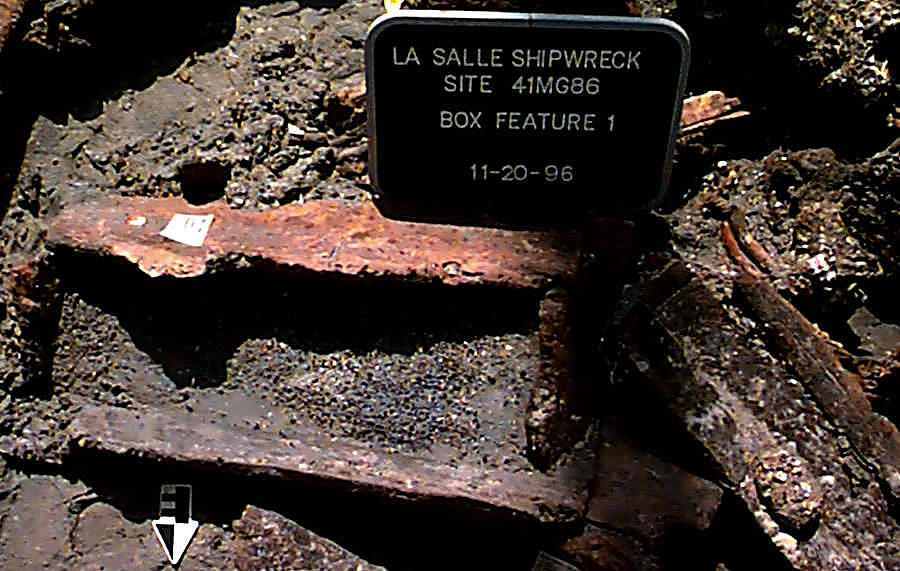
Thousands of Venetian glass “seed” beads—568,798 in all—were contained in this trader’s box, some piled in rows, others still strung on strands of thread, ready to be traded to the Indians. Still nailed shut when it was uncovered, the box contained bits of the straw packing that had been placed underneath and over the top of the beads to protect them.
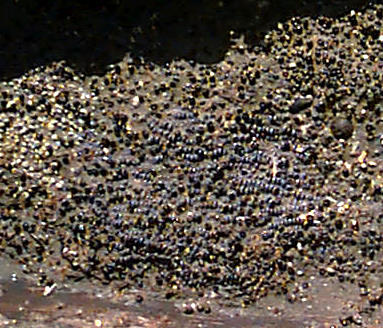
Closeup of trade beads. Predominant colors of the tiny beads were blue, black, and white.  |
|
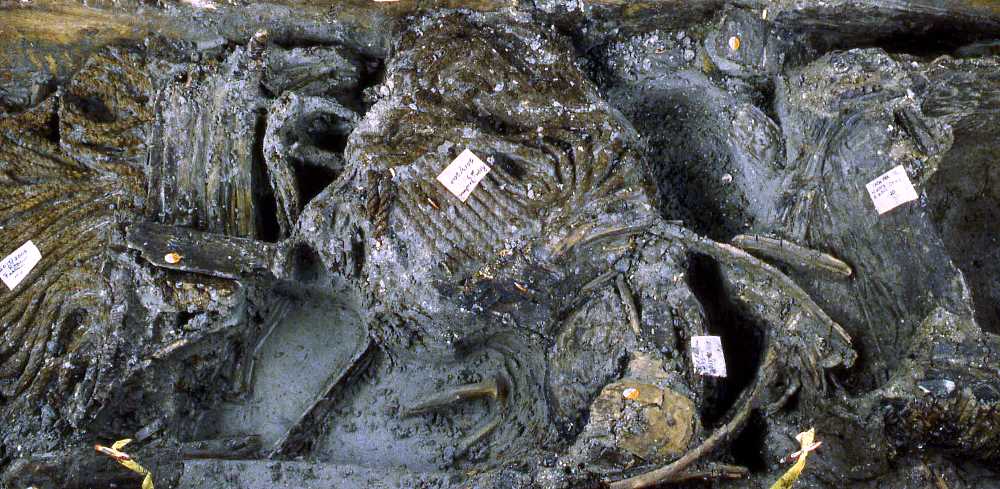
Coils of rope and rigging parts. |
|
